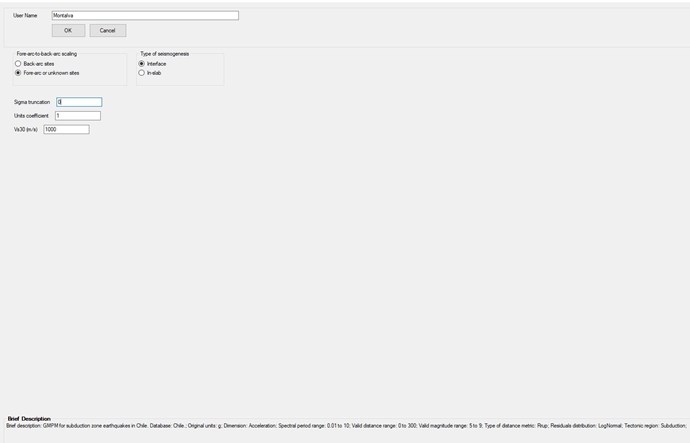Content_Manager
posted this
11 December 2019
- Last edited 11 December 2019
Dear Marisella,
The detailed explanation of "Sigma truncation" is in the R-CRISIS Help Menu -> Building a data file -> 10-Attenuation Data. In this section, you will find a link to "Probabilistic interpretation of attenuation relations".
On the other hand, here is the explanation for "Units coefficients" (text extracted from R-CRISIS Help Menu):
All GMPM used by R-CRISIS (attenuation tables, built-in models and generalized models) give probabilistic relations between earthquake properties, site characteristics and intensities at a site. These relations are given in terms of the first and second statistical moments of the intensities, given some earthquake and site parameters. For instance, for the GMPM in which the residuals are lognormally distributed, the GMPM gives the median and the standard deviation of the natural logarithm of the intensity, given a set of earthquake and site parameters.
The GMPM are constructed to express the intensities in certain units. These units are called the "original units". However, the user of CRISIS might want to perform calculations for intensities expressed in other units. For instance, a user could be using a model whose original units are cm/sec2, but he wants to make hazard calculations for intensities expressed as a fraction of the acceleration of gravity, g. In these case, the g units will be called the "user units", which are given by the user in the Intensities Screen.
The Units Coefficient (UC) is a positive number used to change from the model's original units to the user units, using the following relation:
1 user unit = UC original units (1)
For instance, in the example given above, since the original units are cm/sec2 and the user units are fractions of g, we would have that 1 g = UC cm/sec2, and hence UC=981, because 1 g = 981 cm/sec2.
Regarding the Vs30 value, Montalva et al. (2017) consider Rock condition as Vs30=1000 m/s, you may check this condition in their work.
Do not hesitate to contact us if you have further questions.
Thank you for your preference and interest in R-CRISIS.
Best regards,





